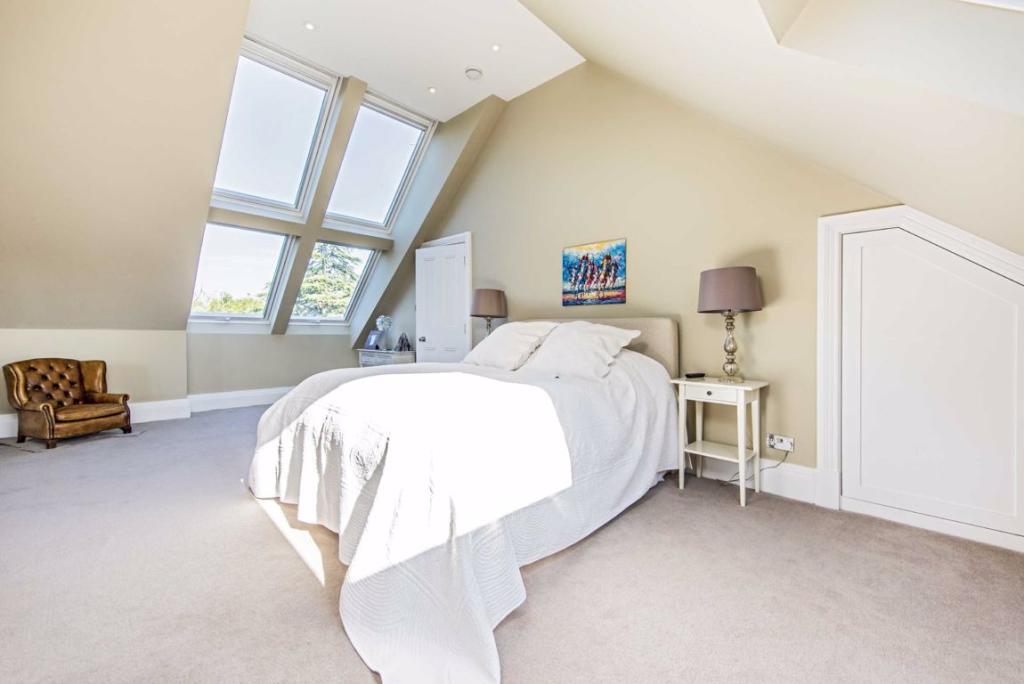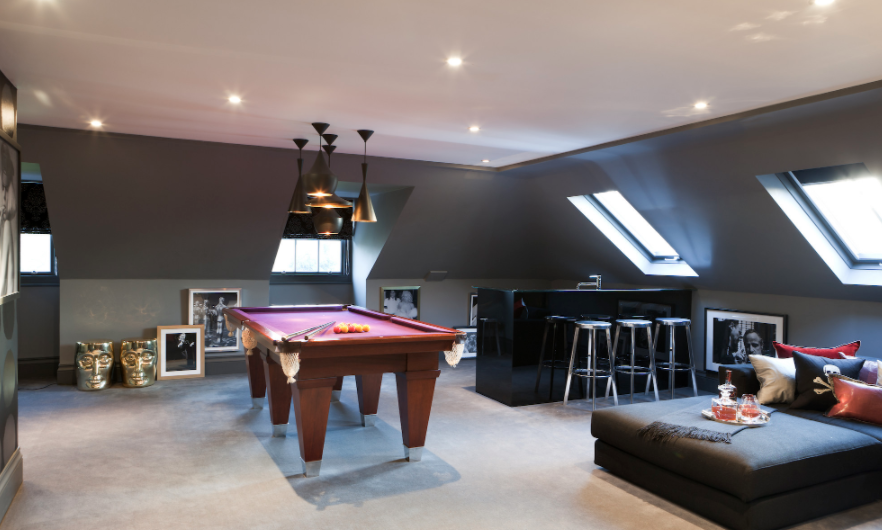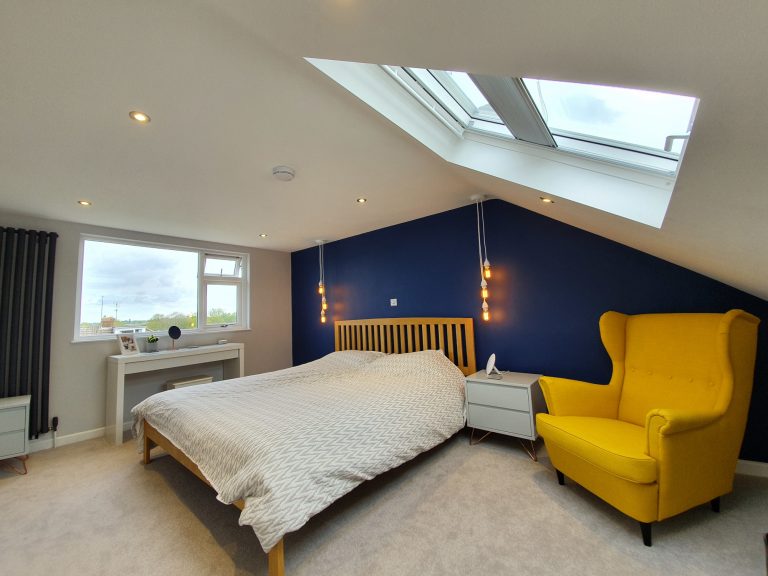Loft Conversion Wimbledon Articles
A Stepwise Guide to Loft Conversion for Wimbledon Property
July 7, 2025

Feeling short of space in your old House in Wimbledon? That is entirely natural because as your family grows, you need more space for your family members and to store furniture and other essential items.
With a loft room, you can add space to your old Wimbledon house. People typically opt for a loft conversion to utilise the space as an additional bedroom, a storage room, a study, or a home office. The loft conversion process may seem daunting, but with a step-by-step guide, it becomes easier to understand.
So, let's begin our discussion without further delay.
Step 1: Initial survey
After you decide to convert the loft space into a bedroom or study, contact a loft conversion specialist in Wimbledon. The contractor will visit your site and inspect the building structure, roof structure, headspace and other necessary things. This information will help you decide if a loft conversion is suitable for your building.
It is better to hire a local loft conversion specialist, as they are familiar with the relevant regulations to follow. Moreover, they have a fair understanding of the building structure and its conditions.
Step 2: Loft Conversion- the right type for you
At the next step, the contractor will discuss with you the most suitable type of loft conversion for your property. For example, you might want a master bedroom or a children's bedroom. Then, a dormer loft conversion is the best idea. For a home office or study, a Velux is ideal, while for a bedroom and study, an L-shaped dormer loft conversion might be the best option.
The contractor will help you decide the best option for you. You have to maintain a balance between the structural capability of the building and your needs.
Step 3: Planning permission and building regulations in Wimbledon
At this step, you need to communicate with the Wimbledon loft conversion specialist to know the local rules and regulations that you need to follow for a loft conversion. For example, most loft conversions in the area are considered to be permitted development. However, a dormer loft conversion might need planning permission.
Additionally, you might have to deal with a Party Wall Agreement if you are sharing a wall with the neighbouring party. For suggestions and advice, consult the loft conversion contractor. If he is experienced in the field, he will be able to guide you through the process.
Step 4: Design and Architectural Drawings
Before you start the construction process, design the complete layout of the loft conversion. With technical drawing, define how the space would look and where the bed or study table would be placed.
With a detailed guide to the structural design, the workers will also find completing the loft conversion easier.
Step 5: Structural planning and engineering
At this stage, the engineers draw out a map of the place to be converted into something usable. The structural details of the space will ensure that the engineers get the construction process right to the core.
They will calculate the placement of the steel beams or construct a load-bearing wall. Such technical details will keep the place intact even after a heavy rain or storm. During the process, ensure compliance with the UK's structural guidance rules and regulations for ultimate safety and security. Moreover, follow any additional guidance from the contractor.
Step 6: Project timeline and expectations
At this stage, ask the contractor to give you a general timeline for the project. A general timeline by the contractor will motivate workers to work to their maximum capacity. At the same time, you get to use the place as soon as possible.
Ask your contractor to break down the work into phases and provide a timeline for each phase. The further breakdown of the work will make it easier for the worker to complete smoothly.
Step 7: Interior decorations and finishing touches
Finally, decide on the interior design of the loft space. Discuss with the contractor what would be a suitable flooring option, lighting, or wall colour. If you are using the space as a study, install warm lights; if you plan to use it as a bedroom, use low lights for a relaxing atmosphere.
Carefully design the interior, as it adds value to the loft room.
Conclusion
A loft conversion may involve several steps, but carefully addressing them makes it easier for you to complete the work. Additionally, it is crucial to hire a reliable and expert loft conversion specialist.
Contact us at Loft Conversion Wimbledon for professional loft conversion services.
Will I need planning permission for my loft in Wimbledon?
June 26, 2025

If you’re a homeowner in Wimbledon thinking about a loft conversion, one of the first questions that comes up is:
Do I need planning permission for this?
The answer? It depends.
While many loft conversions can go ahead under Permitted Development Rights (PDR), several factors can tip your project into needing full planning permission, especially in areas like Wimbledon, where conservation rules and roof designs vary from street to street.
Let’s walk you through what you need to know.
What Is Permitted Development — and Do You Qualify?
Permitted Development Rights allow you to make certain home improvements without formal planning permission. This includes many loft conversions, but only if your design stays within specific limits.
To qualify under PDR in Wimbledon, your loft conversion must:
-
Not extend beyond 40m³ (terraced) or 50m³ (semi/detached)
-
Not go higher than the existing roof ridge
-
Use materials that are similar in appearance to the existing house
-
Set rear dormers at least 20cm back from the eaves
-
Avoid overhanging eaves or raising party walls
-
Not including verandas, balconies, or raised platforms
-
Be on a house (flats and maisonettes do not qualify)
❗ Important: Permitted Development does not apply if your home is in a conservation area, is listed, or has had PDR rights removed by the local authority (Article 4 Direction).
When Do You Need Planning Permission?
You'll likely need planning permission if:
-
Your loft design changes the roofline significantly (e.g., a full-width mansard or large hip-to-gable conversion)
-
You live in a conservation area (some parts of Wimbledon fall into this category)
-
You want to install a front-facing dormer or rooflight that overlooks the street
-
The conversion exceeds volume limits or alters the main roof structure substantially
-
Your property is listed or has other planning restrictions
-
You want to add a balcony or terrace
In these cases, your application will go through Merton Council’s planning department, and you’ll need to provide architectural drawings, elevations, and supporting documents. Planning decisions usually take up to 8 weeks.
What About Building Regulations?
Even if your loft conversion falls under Permitted Development and skips the full planning process, it must still comply with Building Regulations.
This covers essential aspects such as:
-
Structural safety and load-bearing capacity
-
Fire safety (including escape routes, fire doors, and alarms)
-
Floor joists and insulation
-
Headroom (typically minimum 2.2m needed at the highest point)
-
Staircase design
-
Soundproofing
You’ll need to work with a builder or architect familiar with Part B (fire safety), Part K (stairs), and Part L (thermal performance) of the UK Building Regs.
A Building Control Inspector will visit at various stages and issue a completion certificate when everything is signed off. This certificate is crucial when selling or remortgaging your home.
Key Wimbledon-Specific Considerations
-
Conservation Areas: Many streets near Wimbledon Village, Wimbledon Chase, and parts of South Park Gardens are conservation areas. In these zones, planning is more tightly controlled.
-
Terraced homes may have limited volume allowances (40m³), so large dormers or hip-to-gables often require permission.
-
Neighbour notifications: If your work impacts shared walls, you may need to issue a Party Wall Notice under the Party Wall Act 1996.
💡 It’s wise to get a Lawful Development Certificate (LDC) — even for PDR projects — as proof for future buyers and lenders that your conversion was compliant.
FAQs: Planning Permission for Wimbledon Loft Conversions
Q: How long does planning permission take in Merton?
A: Typically 8 weeks from submission, assuming no objections or delays.
Q: Can I do a Velux loft conversion without permission?
A: Often yes, as long as the windows face the rear and don’t protrude more than 15cm above the roof plane.
Q: What if I go ahead without permission when it was needed?
A: You may be forced to undo the work or apply for retrospective planning permission (which isn’t always granted).
Q: Will a planning application be refused if a neighbour objects?
A: Not necessarily. Merton Council assesses applications based on planning merit, not popularity. But clear communication with neighbours is still helpful.
Conclusion: Do You Need Planning Permission for Your Loft in Wimbledon?
✅ You likely won’t need planning permission for a modest dormer or Velux conversion at the rear of your house. Unless you live in a conservation area, have a listed property, or are making significant roof alterations.
🛑 You will need permission for full mansards, hip-to-gables, or any front-facing changes.
Either way, building regulations always apply — and it’s wise to work with specialists who understand Merton’s planning rules inside out.
Ready to Convert Your Loft?
At Loft Conversion Wimbledon, we handle the entire process — from surveys and drawings to planning permission, structural calculations, and full build.
📍 Local expertise in Wimbledon & surrounding areas
📄 Lawful Development Certificates & planning applications
📐 Free design consultation & feasibility check
Let’s help you unlock the potential in your loft — legally, safely, and beautifully.
Will a Loft Conversion in Wimbledon Add Value to My Home?
June 26, 2025

Wimbledon homeowners often face the same dilemma: stay put and make the most of your space, or move somewhere bigger. With property prices in South West London as high as ever — and moving costs pushing £50,000+ once stamp duty, agents, and removals are factored in — it’s no surprise that many are asking:
“Will converting my loft actually increase the value of my home?”
Let’s explore the real benefits, what local homeowners should know, and whether a loft conversion is worth the investment.
Yes, a Loft Conversion Can Significantly Increase Your Property Value
Multiple studies — including those by Nationwide and Unbiased — show that adding a well-designed loft conversion can boost your home's value by 15–25%. For a typical Wimbledon property valued at £800,000 to £1.2M, this means an uplift of £120,000 to £300,000 in some cases.
Why such a big increase?
-
Wimbledon is a prime area where extra bedrooms are in high demand
-
Properties with more floors often feel larger, more functional, and more family-friendly
-
Loft conversions typically add usable floor space — a key factor buyers and valuers consider
📊 According to Whitegates, loft conversions tend to yield better returns than kitchen upgrades, conservatories, or even ground-floor extensions.
What Type of Loft Conversion Adds the Most Value?
Not all lofts are created equal — and not all conversions deliver the same return. Here's what works best in Wimbledon:
|
Type |
Benefits |
Best For |
Avg. Cost (London) |
|---|---|---|---|
|
Velux (Rooflight) |
Cheapest & quickest |
Homes with good headroom |
£30k–£45k |
|
Dormer |
Adds floor area & head height |
Most terrace & semi-detached homes |
£50k–£65k |
|
Hip-to-Gable |
Turns sloped roof vertical |
End-terrace or semis |
£55k–£75k |
|
Mansard |
Maximises full attic volume |
Period properties, detached homes |
£70k–£90k+ |
💡 Pro tip: If you’re planning to sell soon, a dormer with an en-suite bedroom is often the sweet spot for cost vs. added value.
Why Loft Conversions Work So Well in Wimbledon
Living in Wimbledon has its perks — great schools, green space, village charm, and fast links to the City — but space comes at a premium. Loft conversions are ideal for this area because:
-
Most homes (Victorian terraces, 1930s semis, and Edwardians) have suitable roof structures
-
Many projects can be done under Permitted Development rights
-
Buyers in Wimbledon are often young families or professionals actively looking for extra bedrooms or remote work spaces
By converting upwards, you're creating valuable living space without sacrificing garden area, which remains a major selling point in Wimbledon.
Will You Need Planning Permission?
In many cases, no — especially if you’re not changing the roofline too dramatically. But if you’re planning a mansard or hip-to-gable conversion, or your property is in a conservation area, you’ll likely need full planning permission.
✅ You will need:
-
Building Regulations approval (for fire safety, structure, insulation, etc.)
-
A Party Wall Agreement if you share walls with neighbours
-
Possibly a Lawful Development Certificate — helpful when selling later
Always check with Merton Council or consult a loft specialist before starting.
What Else Do You Gain (Besides Property Value)?
Even if you're not planning to sell right away, a loft conversion brings everyday benefits that improve your home life:
-
A dedicated home office or guest suite
-
Space for growing families — teens love the privacy of a top-floor bedroom
-
Improved energy efficiency — thanks to modern insulation and new windows
-
Better lifestyle flow — more storage, fewer arguments over rooms
In short: you’re not just investing in your property. You’re investing in your comfort, flexibility, and future.
Common Mistakes to Avoid
A few things can derail the value-adding benefits of your loft conversion:
-
Cutting corners with budget or materials
-
Ignoring proper insulation and fire regs
-
Poor design that feels like an afterthought
-
Choosing a builder without loft-specific experience
-
Not checking roof height before planning
🛠️ A successful conversion requires careful planning, structural know-how, and a keen eye for layout. Get it right, and you’ll enjoy the benefits for years to come.
Final Thoughts: Is It Worth It?
If you live in Wimbledon and want to add both space and long-term value to your home, a loft conversion is absolutely worth considering. With the right design and construction team, it can deliver:
-
15–25% increase in market value
-
A more desirable, future-proof home
-
A better lifestyle, without needing to move
It’s not just an extension — it’s an investment in the way you live.
Get Expert Advice for Your Wimbledon Loft
We’ve helped dozens of homeowners in Wimbledon transform their lofts into bright, liveable spaces that stand the test of time — and the market.
🔍 Want to explore your options? Book a free site visit and design consultation today.
📞 Speak to our friendly team and discover what your loft could become.